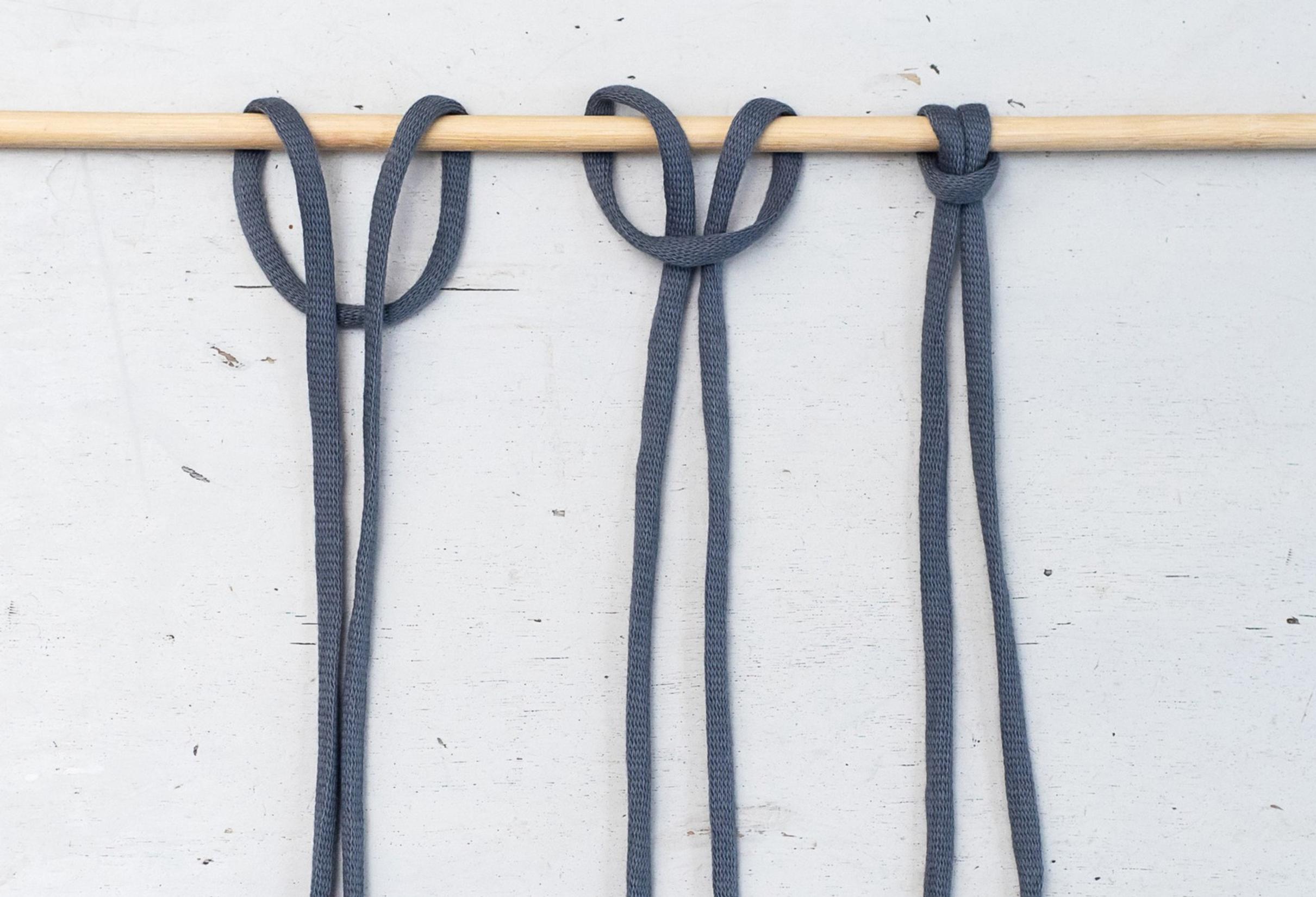
Half hitch, overhand knot, and 4 other must-know macramé knots—see illustrated guide
Mastering a few basic macramé knots opens up countless pattern possibilities. This guide will teach you how to tie common knots like the lark’s head knot, overhand knot, half square knot, square knot, and half hitch knot. Perfect for beginners looking to learn basic macramé knot techniques.
Lark’s head knot
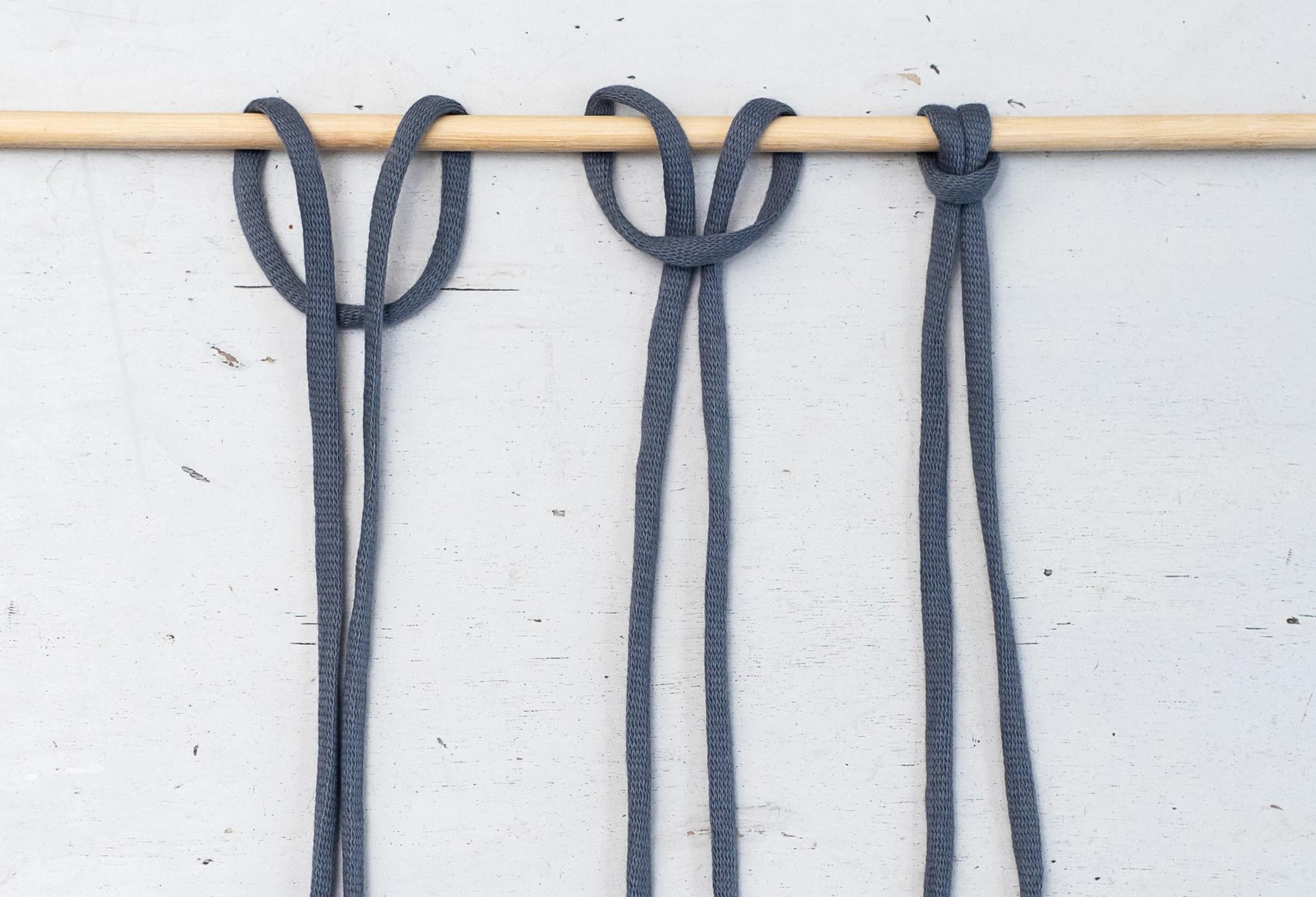
The lark’s head knot is an essential macramé knot used to begin most projects, secured around the base cord, ring, or stick. Fold the cord in half at its midpoint, place it behind your base, and then feed both ends through the loop. Pull tight to secure.
Half square knot
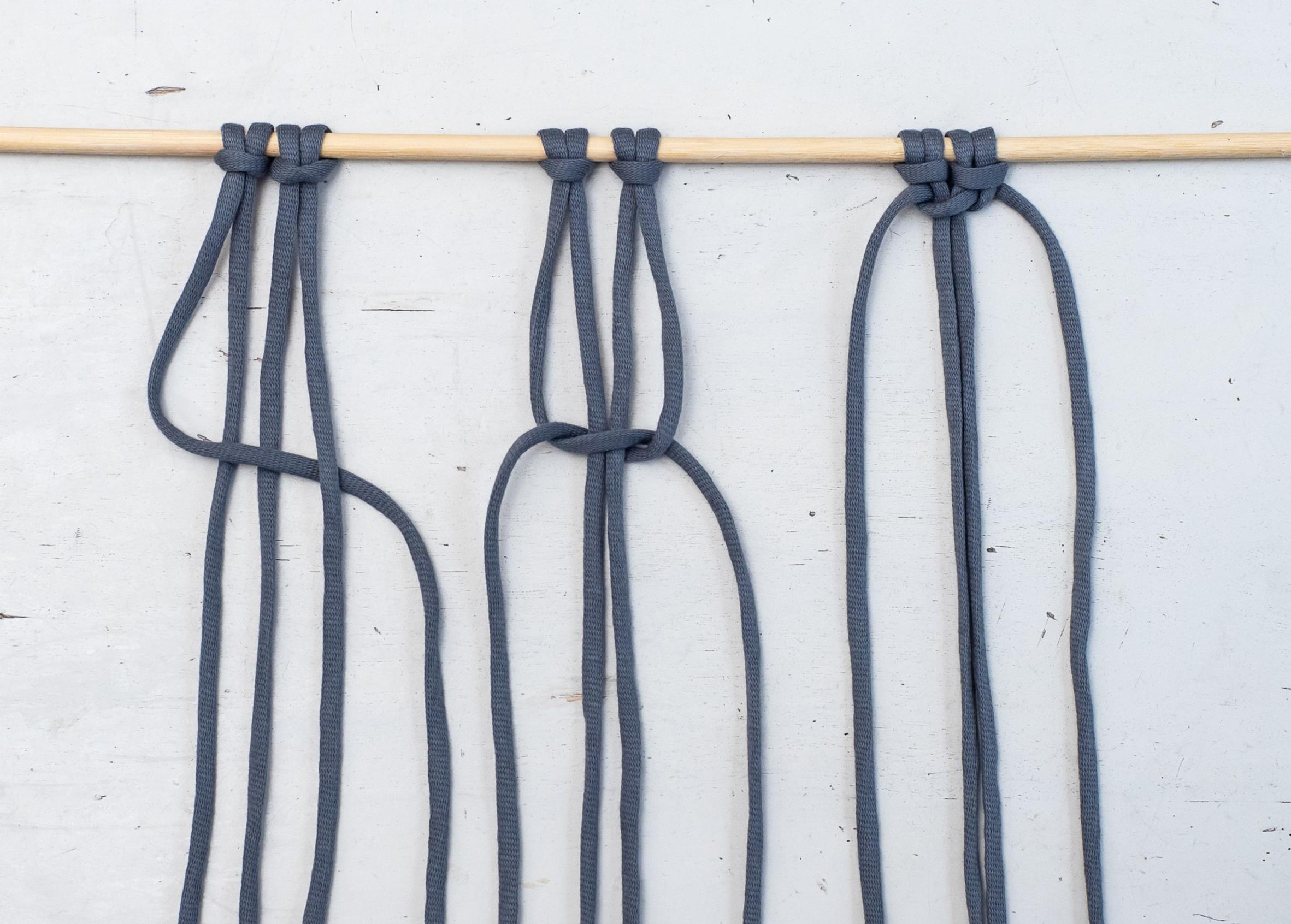
This macramé knot is formed with four cords: two cords run straight in the center while the outer cords do the knotting. Repeating the half square knot creates a twisted pattern. You can tie the half square knot as shown (with the left cord passing over the center cords) or as a mirror image (with the right cord passing over the center cords).
Bring the left cord over the center cords and under the right cord. Next, bring the right cord under the center cords and over the left cord. Tighten by pulling on the outer cord ends.
Square knot
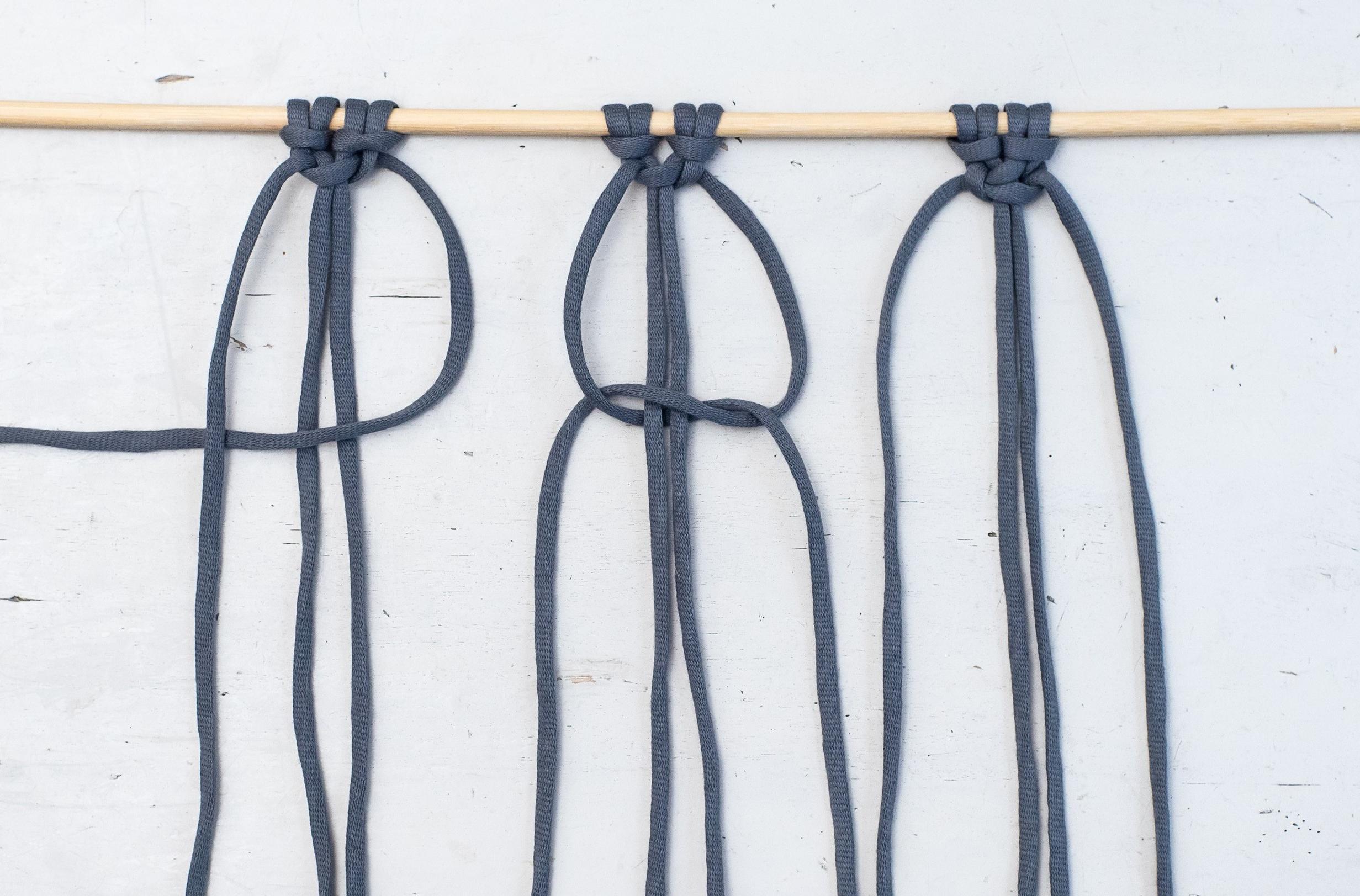
This knot builds on the previous, the half square knot, and is tied as its mirror image to balance it out. This prevents twisting and creates a flat pattern. You can tie square knots individually (two consecutive half square knots) or in groups of several consecutive square knots, which create a pattern that lays flat.
First, tie a half square knot. Then tie the same knot mirrored: bring the right cord over the center cords and under the left cord. Next, bring the left cord under the center cords and over the right cord. Tighten by pulling the outer cord ends.
Alternating square knots
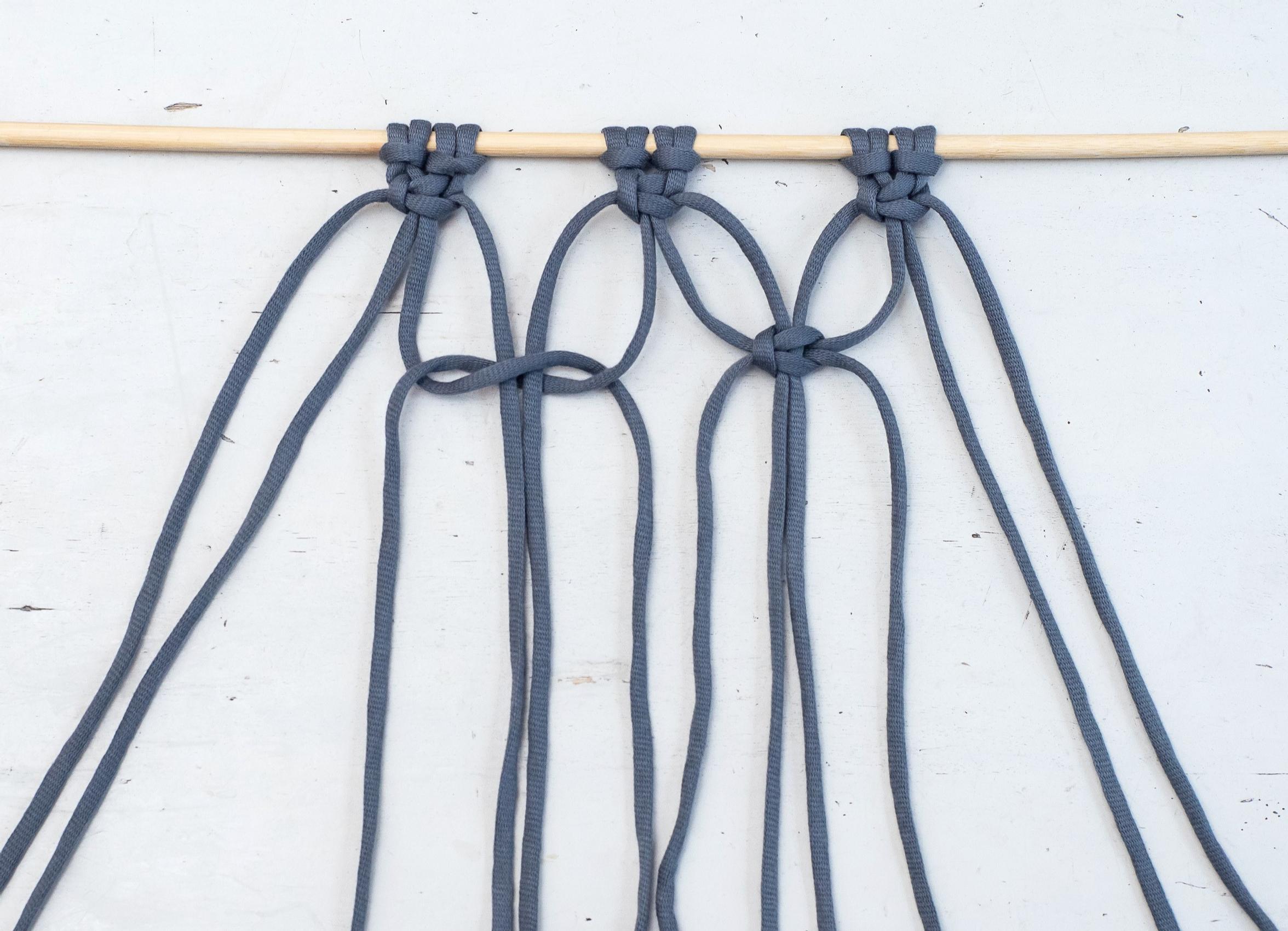
You can create a net-like structure in your macramé piece by tying square knots in layered rows. For each new row, pick two adjacent pairs of cords from neighboring knots in the previous row. The spacing between rows determines the density of the pattern: the closer the knots, the more solid the resulting pattern.
Half hitch and double half hitch knot
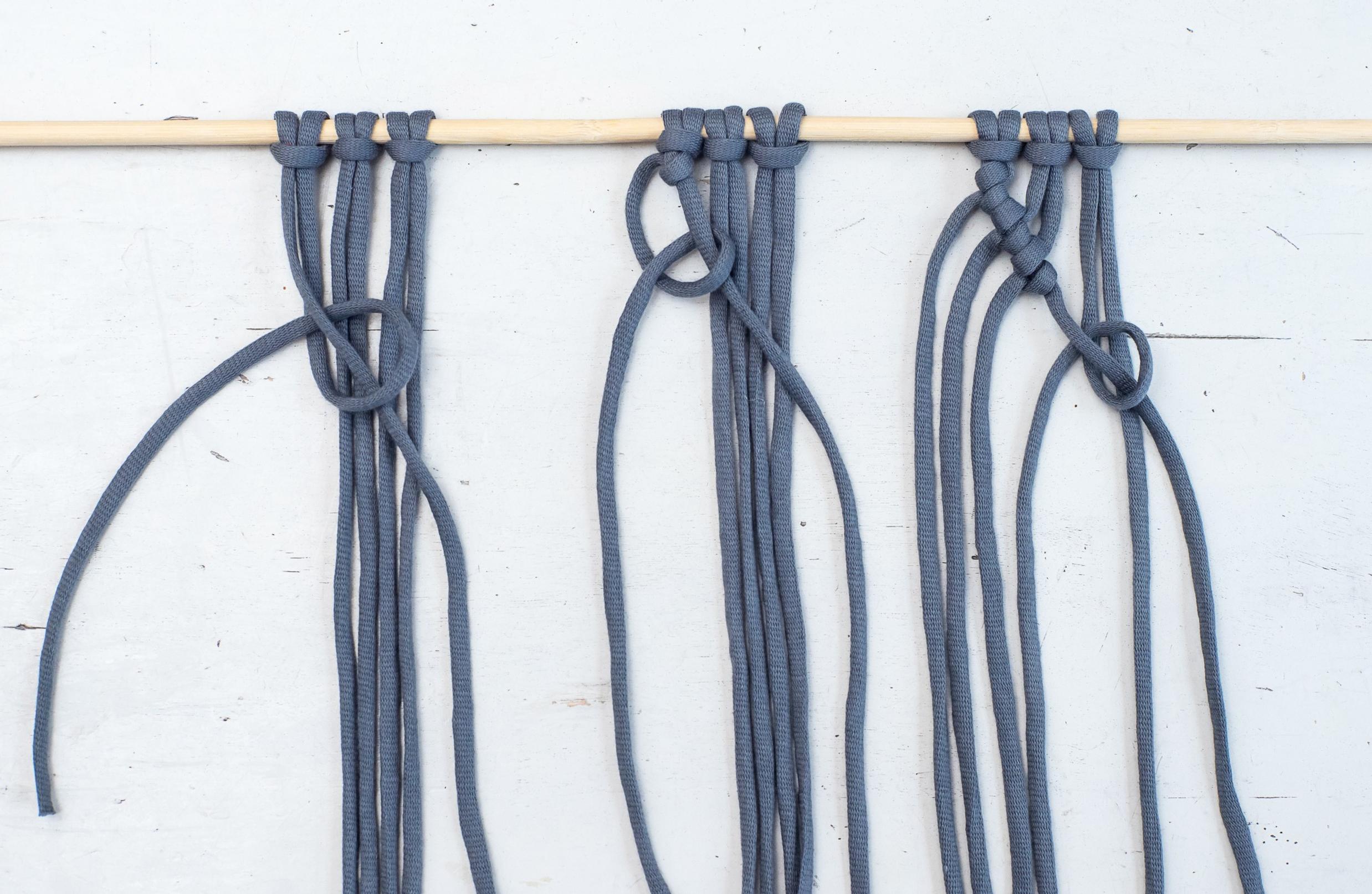
Single half hitch knots create decorative, twisted rope patterns in a macramé piece, often tied in pairs to form a double half hitch knot. To tie this knot, wrap the working cord around a straight holding cord. Rows of double half hitch knots can form straight or diagonal designs.
Use the outermost cord as the holding cord. Bring the next cord under and around the holding cord, passing it beneath the holding cord but over the working cord. Tighten the knot by pulling the holding cord straight (or diagonally, if you’re making a diagonal knot, as shown) while pulling the working cord to the side. Tie the same knot again with the same cord, then take the next cord as your working cord. You can tie double half hitch knots from left to right (as pictured) or from right to left.
Overhand knot
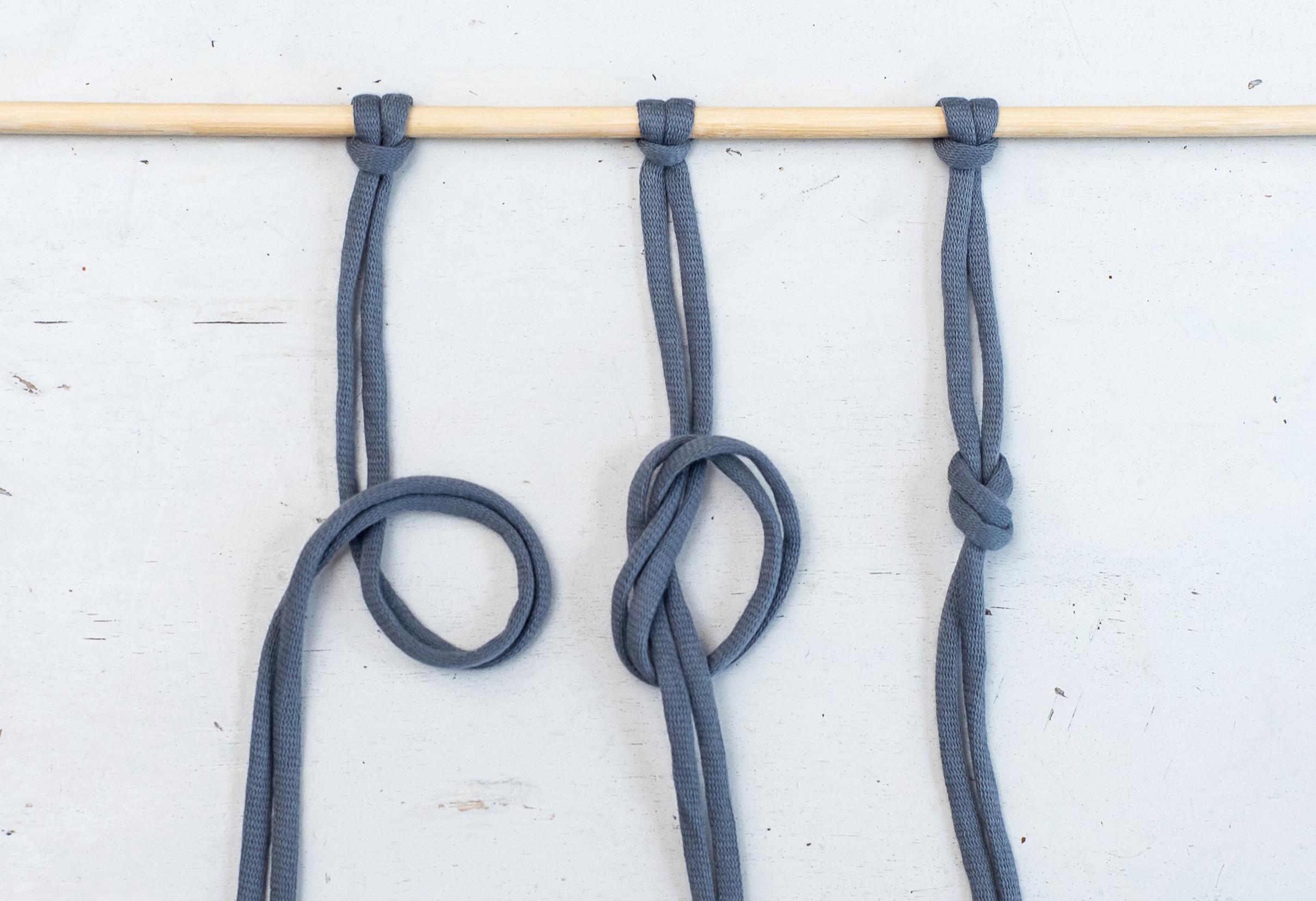
Macramé pieces are often finished with an overhand knot. Gather the cords together and make a loop. Feed the ends of the cords through the loop. Pull tight to secure.


